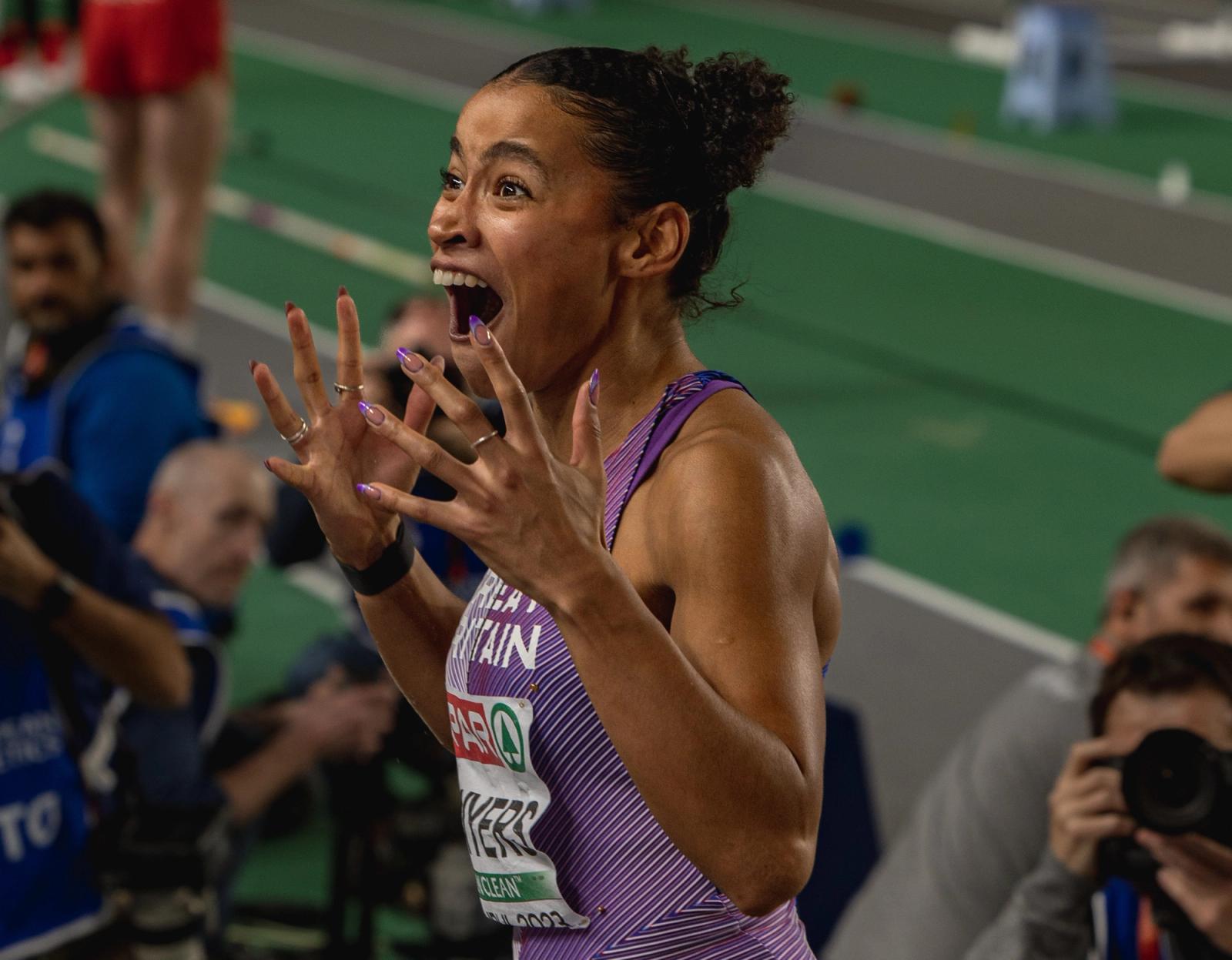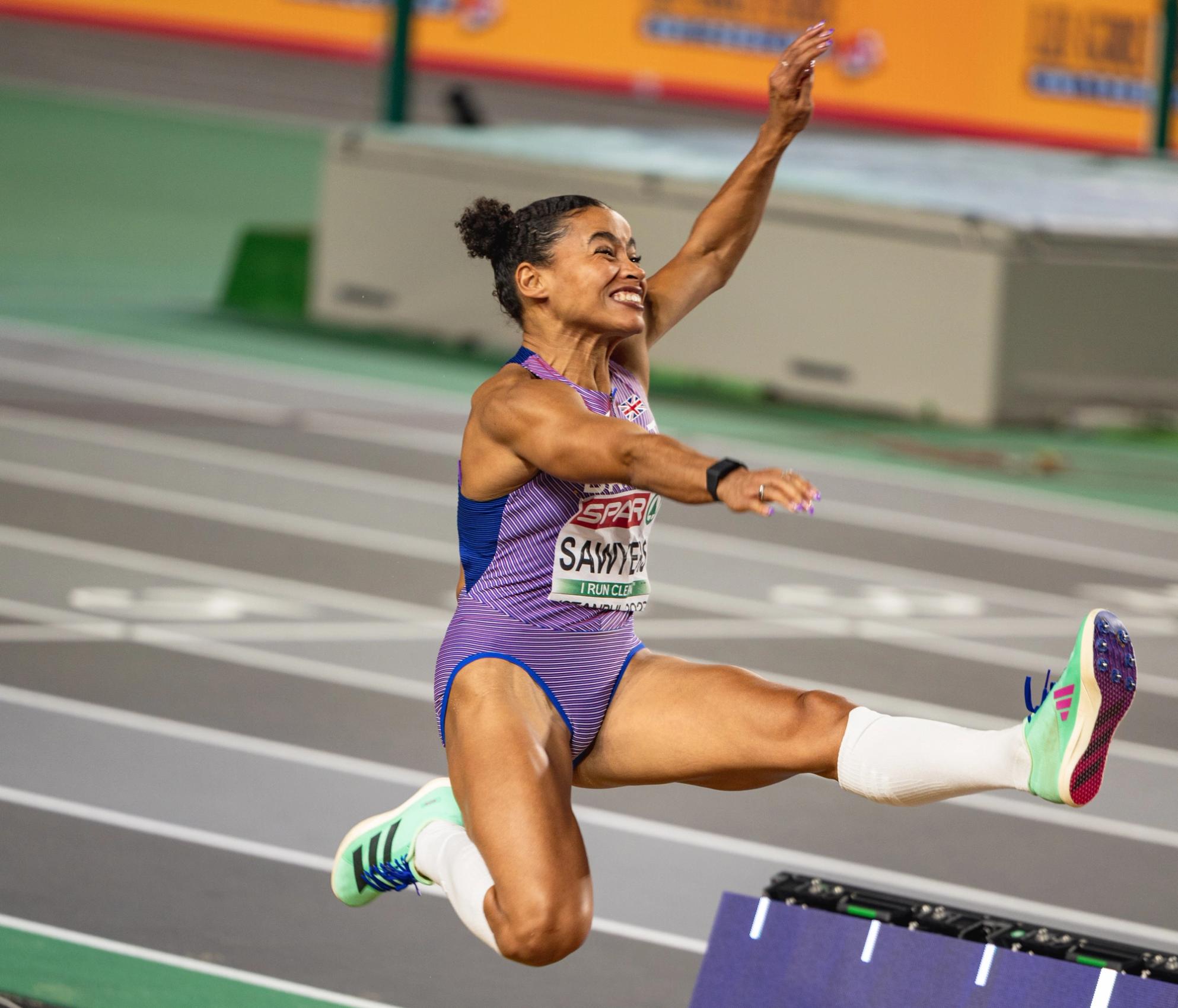By Chris Chavez
February 20, 2024
World Athletics is reportedly planning to test a new approach to measuring long jump take-offs during the upcoming outdoor season, CEO Jon Ridgeon mentioned on a recent podcast appearance.
Here’s what you need to know:
– Ridgeon was a guest on the Anything But Footy Podcast, where he mentioned that a “take-off zone” may be implemented instead of a traditional wooden board. If an athlete’s foot crosses the line, a no-jump would be called. The jump instead would be measured from where the athlete’s front foot takes off within the zone to where they land in the sand pit. Under the current setup, the distance is measured from the take-off board to the closest point from the sand to the board. Athletes currently aim to jump from as close to the foul line as possible.
– Ridgeon said, “That means every single jump counts. It adds to the jeopardy and drama in the competition.”
– No exact dimensions of the take-off area have been shared yet. It is rumored that the take-off zone will be tested in low-level meets in 2024. This would not impact long jump competition for this summer’s Paris Olympics.
– The decision to trial the new take-off came as a result of data that a third of all the jumps at the 2023 World Championships in Budapest resulted in a foul.
– He said: “We are testing at the moment a take-off zone, rather than a board…But at the same time, we are trying to work out ways of getting instant results so that you don't have to wait 20 or 30 seconds before the result pops up, and how we speed up the whole thing.
– World Athletics has yet to issue an official statement or comment on the reports.
What do people think?
Four-time long jump Olympic gold medalist Carl Lewis was vehemently against the changes on X.
“You're supposed to wait until April 1st for April Fools jokes…I guess It supports what I've been saying, that the long jump is the most difficult event in track and field. That would just eliminate the most difficult skill from the event. Just make the basket larger for free throws because so many people miss them. What do you think?”

Justin Britton / @JustinBritton
Jazmin Sawyers Breaks Down Pros And Cons
2023 European Indoor champion Jazmin Sawyers addressed the potential changes in a series of Instagram stories on Thursday. The following has been transcribed from her videos and edited lightly for clarity.
Pros:
Every Single Jump Would Count
“While I’m not for this idea, let’s start with the pros. Every single jump would count. We wouldn’t see fouls. There wouldn’t be X’s on scoreboards. You wouldn’t have people have three fouls and then be out of the competition – unless they were out of the zone but I assume the zone is going to be big enough that’s not going to happen.”
We Might See Bigger Jumps
“Oftentimes people talk about how the biggest jumps were the fouls or how someone had a huge jump but it was 15 centimeters behind the board. We would see that. We would see just exactly how far people are jumping. We might get some new records. I don’t know if that’s actually a good thing but it could be potentially exciting to get bigger jumps.”
No Slipping On The Board
“However, we weren’t slipping on the board before they changed the board surface. The board before we had plasticine was like wood. We’ve only been slipping since they lowered it to a completely level flat board and it’s like a synthetic material. I don’t think we need to remove the board to not slip on it. We could just change the material back. But it would solve that problem, I just think it’s a bit extreme to solve (the slipping) problem.”

Justin Britton / @JustinBritton
Cons:
Grassroots Sport
“How do you do this accurately at the grassroots level? You’re going to have to have someone watching exactly where the person took off. Yes, we’ve already got people watching for the plasticine (board). But we’ve got to have someone watching and accurately deciding where they took off. I assume at the elite level, there will be cameras and technology to do that. At the grassroots level, that’s so much harder than seeing if somebody went over a foul line…In a sport that is kind of struggling, we want to do as much as we can to encourage grassroots sport and not make it more difficult for them.”
Cheating
“This is going to be much, much easier to cheat in. ‘I took off there!’ ‘No, you didn’t. You took off 20 centimeters that way.’How are we going to verify records when the official gets to decide exactly where it’s measured from?”
Takeoff Surface
“There is a reason that we take off on a board and not just on the track - because it’s better to take off from the board…Oftentimes, taking off on the track feels dead than taking off on the board. So I think it’s going to be harder to get those big, big jumps when you take off from the track rather than the board…This one is a minor consideration because, obviously, triple jumpers have two of their phases on the track.”
The Time It Will Take To Measure
“One of the considerations for why they want to change the long jump is because it takes too long to get the distance up on the board – 20 to 30 seconds. That’s just a waste of time – that’s what was said on the podcast where this all came from. But surely, it’s going to take longer if you don’t even know where you’re measuring from. Because you have to find the take-off point and the landing point. It’s only going to slow that down.”

Removing An Essential Element Of The Skill
“Part of the skill is that you have to hit the board. If you remove that, it changes the event completely. I don’t think you’d be able to compare the old records to the new records. I think it just becomes a different event when part of the skill isn’t hitting the board.”
Less drama
“So much of the drama of the event is: Whether somebody will hit the board or not; Whether they were this close; was it a foul or not? That drama is removed and we’re doing something different. Yes, we’re still trying to jump into sand but the idea that we’re trying to hit a certain mark is part of the skill – and I think a big part of the skill. If runners didn’t have to go at the gun and they could just go whenever they felt like and we just took the fastest time, that would just be a time trial. It would be a different event. I don’t think there’s anything wrong with the long jump and I think having the board is part of the drama. When you’ve got someone do two fouls, will they manage to make it and get another jump in? Who knows?”
No More Super Imposed Measurements For TV
“You could not longer have those superimposed lines on the TV to show when somebody’s gone over the winning jump or when they’ve gone over 7m or 8.5m. You couldn’t have that because there’s no takeoff board. So obviously everybody’s takeoff would be in a different place so you couldn’t show when they landed whether or not they were ahead of the person before. So to me, that takes away from the viewing experience.”
Crowd Can’t Tell If A Jump Is Big
“If you’re actually in the crowd, because the takeoff area will be large, you can’t always tell whether a jump is big or not because you can’t compare it to the person before. When somebody does a big jump at the moment, the crowd can get excited and cheer. You can’t do that when you don’t know where the takeoff point is. You have to wait for the result anyway and it becomes less exciting. I enjoy seeing the gold, silver and bronze lines and the line that shows whether you’re in the top eight to see how people are doing and whether they’re going to make it in the next three rounds.”

Chris Chavez
Chris Chavez launched CITIUS MAG in 2016 as a passion project while working full-time for Sports Illustrated. He covered the 2016 Olympics in Rio de Janeiro and grew his humble blog into a multi-pronged media company. He completed all six World Marathon Majors and on Feb. 15th, 2025 finally broke five minutes for the mile.



